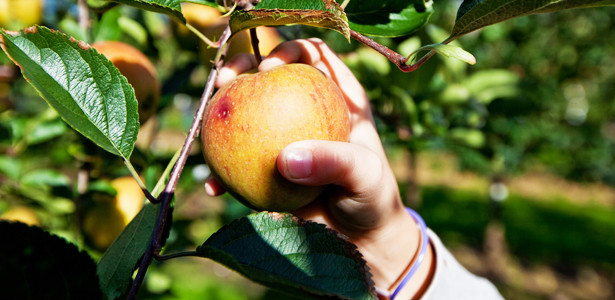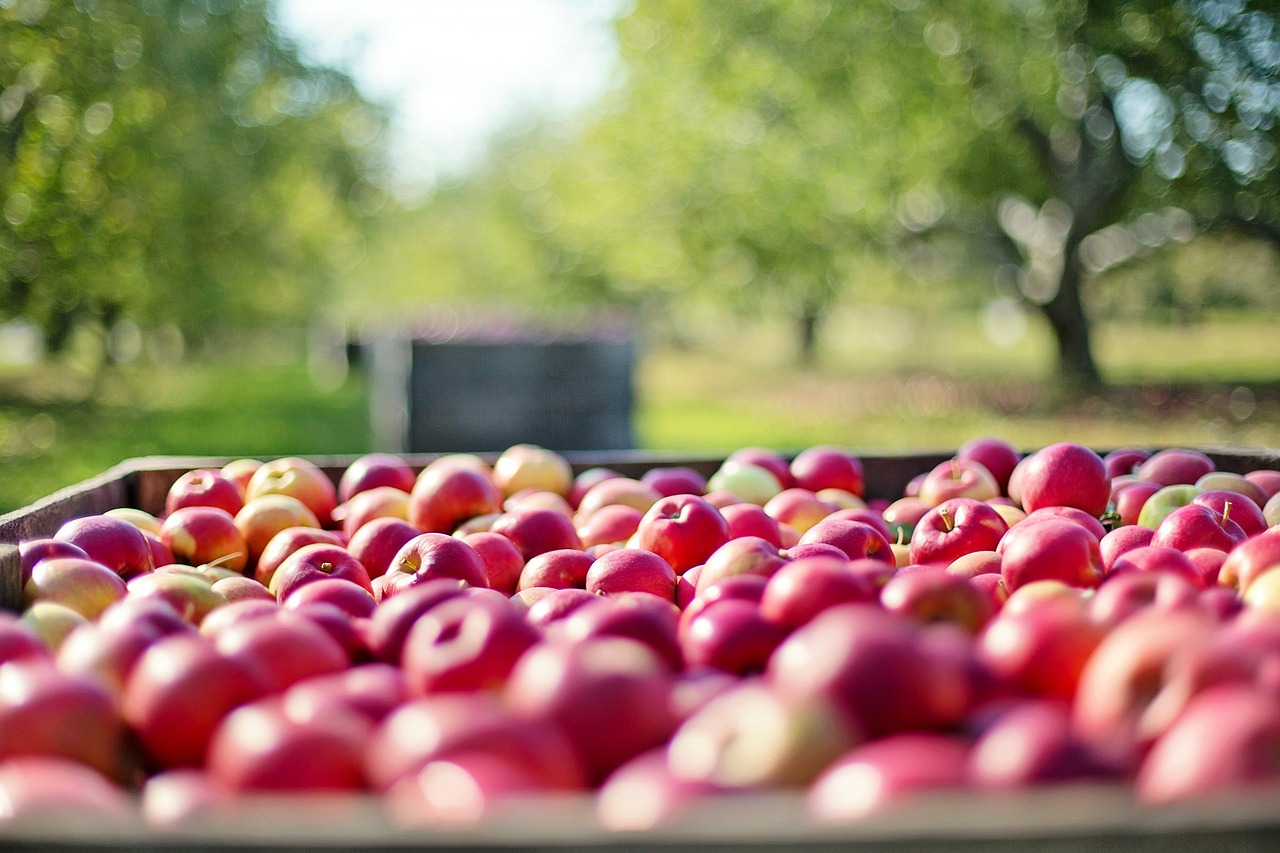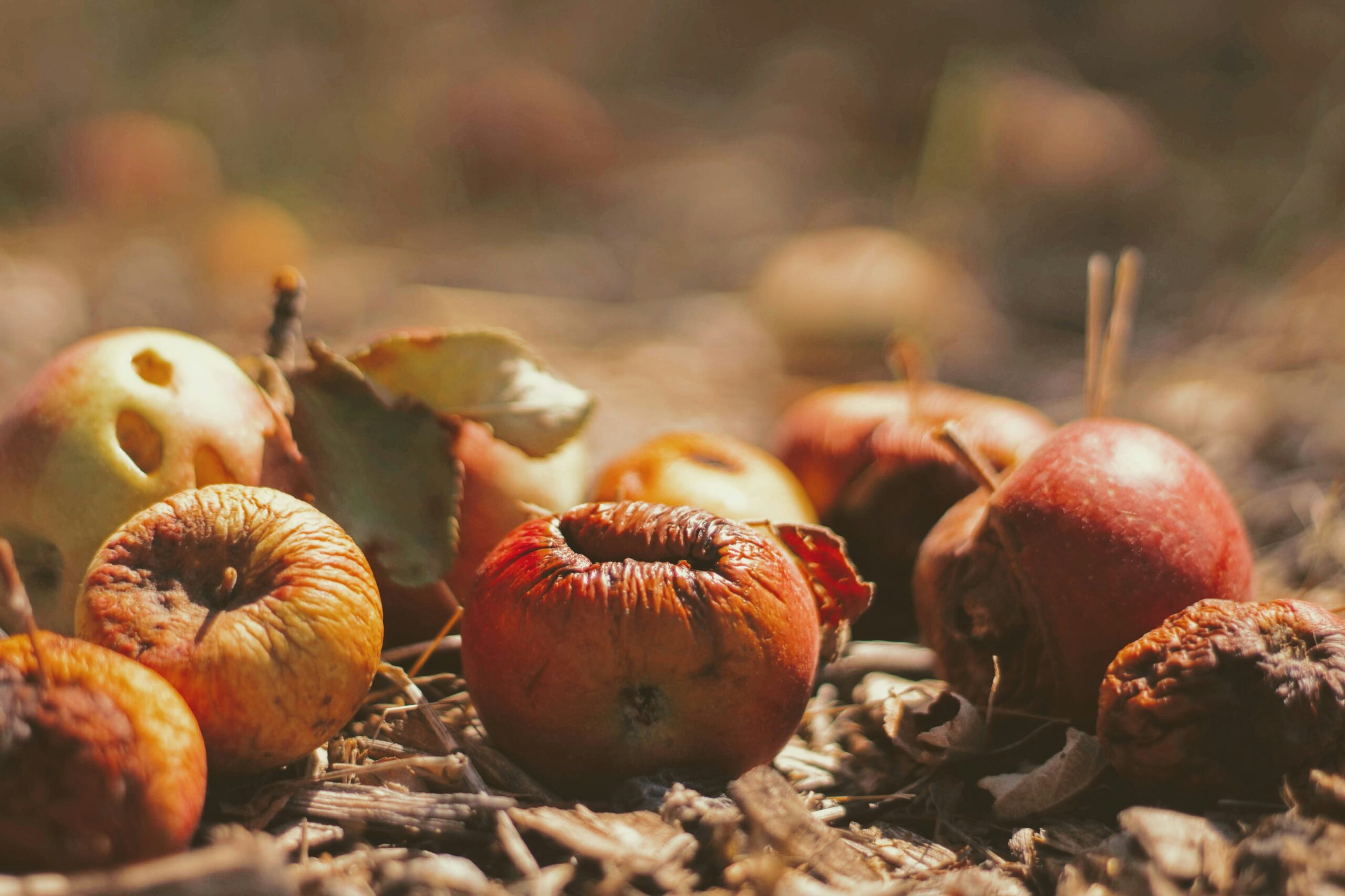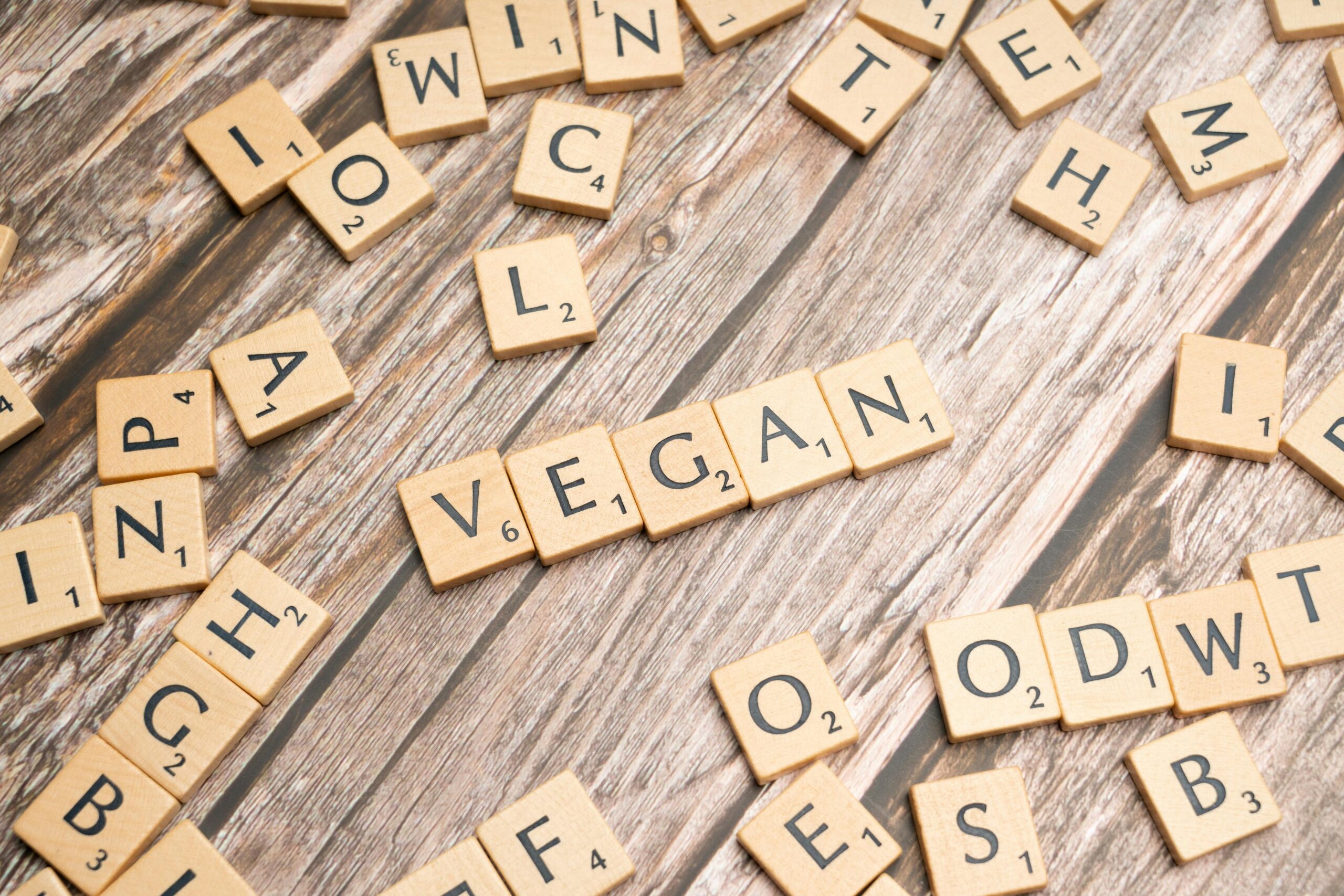This report forms part of the "Moving to a vegan agricultural system" series which examines how a move to an agricultural system where no animals are used would impact sectors such as the economy, employment, land use, the environment and food security. This part outlines impacts on the Australian economy. It will attempt to answer the following questions.
- How much do current animal industries contribute to the economy, including exports?
- What would be the contribution to the economy of alternative industries?
- How many people are currently employed in animal industries?
- How are these jobs distributed amongst industries, such as farming, sale yards, slaughterhouses and processing, distribution, retail, etc?
- What is the geographical distribution of employment in animal industries?
- What would be the geographical distribution of employment in alternative industries?
- What population movements would a move to alternative industries entail?
- What would be the impact on housing and regional towns by a move to alternative industries?
- As the demand for meat, dairy and eggs reduces, what new jobs would be created in the expanding plant farming sector and in the new vegan food industries?
- What programs can be put in place to help animal farmers transition to plant-based farming?
While this report concentrates on the impacts of a vegan agricultural system, in this section we will assume that animal products are no longer imported into Australia. This is relevant in an economic analysis as Australia is a net importer of some animal products, such as fish and pig meat.
The current economic scale of the animal agriculture industry
This section looks at the current production value, employment figures and exports values for the animal agriculture industry.
Economic value
The economic value of the animal agriculture industry can be measured in a number of ways. We will look at some of these and compare it to other industries and the economy as a whole.
Using the Australian Bureau of Statistics (ABS) tables for "agricultural commodities produced", we find that in 2013-14, the value for all agriculture was $50.8 billion. Plant products (grains, fruit, nuts and vegetables) were valued at $28.1 billion (55%), while animal products were valued at $22.7 billion (45%).
Another ABS table for "industry value added" gives a value of $27.5 billion for the agriculture, forestry and fishing sector in 2013-14. Estimating 45% of this as being from animal agriculture, gives us about $12.4 billion. This is 1.2% of the total "value added" for all industries of $1.04 trillion. This compares to 12.0% for the mining sector, 10.4% for construction, 9.4% for manufacturing, 6.4% for health care and 2.2% for education and training.
The World Bank gives a figure of 2.4% for the value added percentage of Gross Domestic Product (GDP) for all agriculture. This is similar to that given above.
The chart below shows the relative contribution to the Australian GDP for each industry. Agriculture is the narrow red section at the top. Animal agriculture makes up less than half of this. This illustrates that animal agriculture is not nearly as significant to the Australian economy as many people imagine. In fact, the only industry smaller than animal agriculture is arts and recreation!
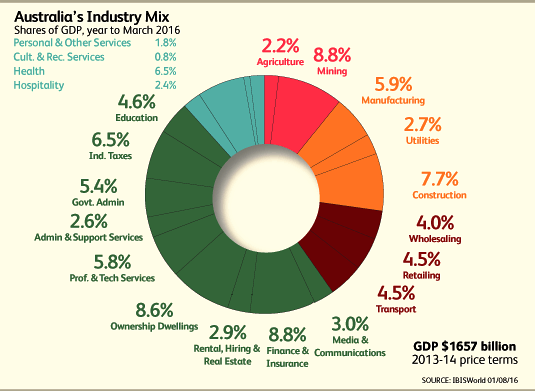
In summary, the animal agriculture industry contributes about 1.2% to the Australian economy. The below graph shows the industry by animal product (from data in "Australian Pig Annual 2012-2013").
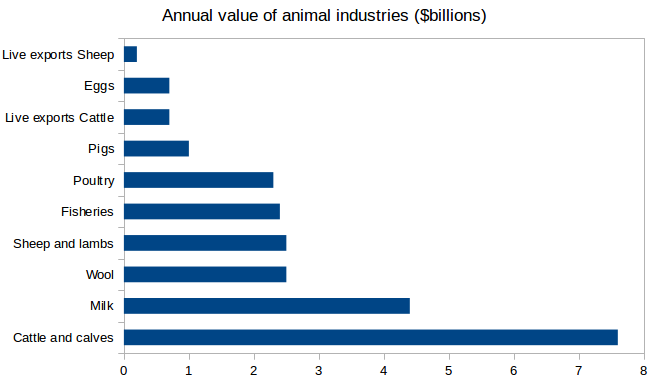
Exports
Australia exports around 80 percent of its agricultural production. In 2017-18, total Australian exports were $403 billion. Agricultural exports were $52 billion, with about half of that from animal products. Animal products contribute about 7% to total exports. The main animal exports were cow meat ($8 billion), meat from other species ($4.5 billion), wool ($4 billion), live cows and sheep ($1.7 billion) and dairy ($1.3 billion).
The following graph shows animal agriculture exports in relation to other sectors. Mining consists of iron ore, other metals, oil, gas, gold, etc. Services include tourism and business and technical services. One such service is education-related travel, earning about $18 billion, slightly less than all forms of animal agriculture.
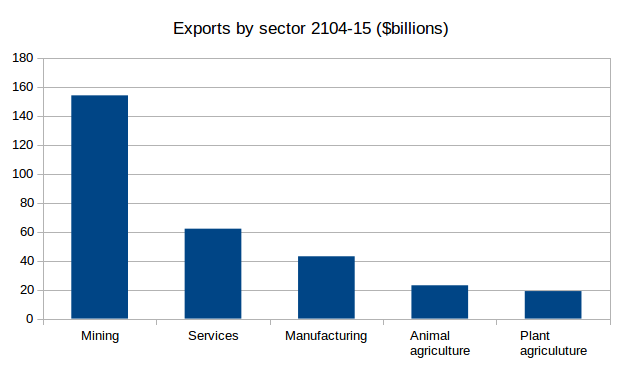
The graph below from the Reserve Bank of Australia shows the rapid decline in the significance of agriculture as an export industry. It has gone from nearly 50% of exports to about 15% in the last 40 years.
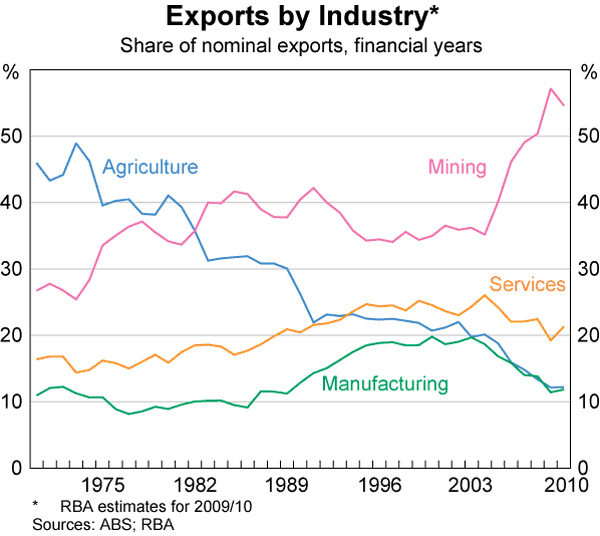
Employment
In this section we will estimate the number of people employed in the animal agriculture industry.
Employment figures are usually reported in the agriculture sector as a whole and includes plant and animal farming, forestry, fishing and support services. There is a lot of variability in the numbers reported, depending on the source. Some of these figures, all from government or industry sources, are 304,000, 313,000, 478,000 and 513,000. These range from 2.7% to 4.8% of total employment (11,482,000 in 2013-14). The World Bank estimates employment in agriculture in Australia at 2.6% in 2017.
Detailed breakdowns by sub-industry are given in the comprehensive Agricultural commodity statistics 2014 report and these can be used to estimate the employment numbers for the animal agriculture industry. The number of people employed in agriculture, forestry and fisheries are given in Table 89 as:
- 76,100 plant-only (fruit, vegetables, crops, forestry)
- 47,200 animal-only (dairy, poultry, livestock, fishing)
- 189,700 mixed (wheat/sheep, support services, other)
Most of the mixed category is in the wheat/sheep industry, which produces similar amounts of grains and animal products. If we evenly allocate the mixed category to plants and animals, we find about 142,000 people employed in the animal agriculture industry. This is 1.2% of total employment. This compares to 9.3% employed in construction, 8.9% in health care, 7.7% in manufacturing and 3.3% in education and training.
Employment figures are also given for the Australian processed food industry (table 101), which includes processing of meat, dairy, fruit, vegetables, flour, bakery products, sugar, wine and spirits. Total employment is 240,000, with meat processing employing about 80,000.
The graph below from the Reserve Bank of Australia shows the decline in agriculture's share of total employment over the last century.
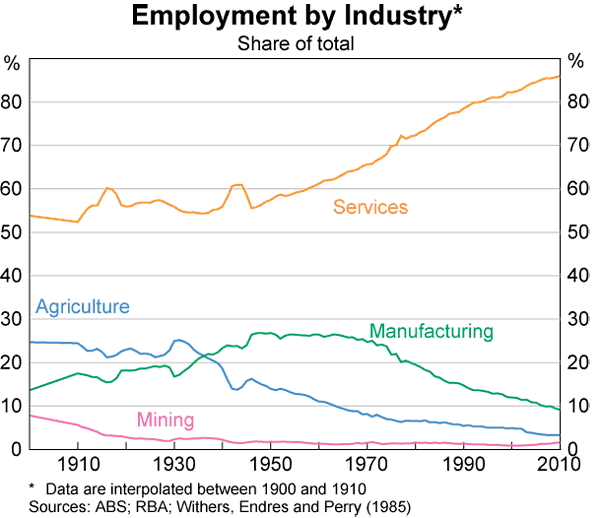
The chart below shows another view of the share of employment for each industry. Agriculture is the narrow red section at the top. Animal agriculture makes up less than half of this, or about 1.4%.
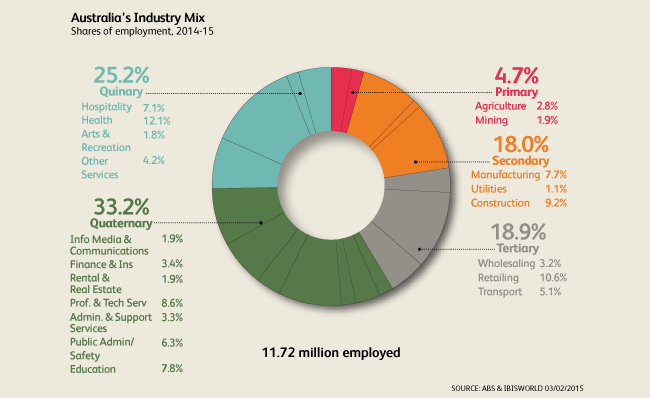
According to an article in Australian Farmers, the website of the National Farmers' Federation, "in Australia today only 0.6% of the population is directly involved in agriculture".
Summary
In summary, we have determined that the production value of the animal agriculture industry is about 1.2% of GDP, it exports about 7% of total exports, and employs less than 1.5% of the Australian workforce. As can be seen from these three measures, animal agriculture is a relatively small part of the modern Australian economy.
Impacts on the economy of moving to a vegan agricultural system
This section looks at the economic changes that moving to a vegan agricultural system may cause and how any negative impacts could be mitigated.
Economically there would be a potential reduction in GDP of about 1%, but this would be offset by growth in other areas, including the vegan food market. The animal agriculture system also produces significant external costs that it does not pay for. Currently these costs are paid for directly and indirectly by Australian society. These costs include soil erosion, drought, climate change, pollution from excess nutrients and pesticides, illness caused by unhealthy products, etc. This topic is covered in more detail in the section Reusing land currently used by animal agriculture.
Exports may be reduced by 7% though this could be replaced with exports of plant based alternatives. Also, the reduction in exports would be partially offset by a reduction in imports, as we assume under this scenario that animal products are no longer imported into Australia. These foods could be replaced by locally produced plant based alternatives. The agri-food sector is unlikely to be affected too much as it can shift to using non-animal food sources. For example in the food processing industry some of the meat and dairy processing jobs could transfer to plant-based equivalents, like smallgoods, milk, ice cream and cheese as well as soy based meat alternatives. There will be significant increases in employment in these new industries producing processed vegan foods.
The current agricultural subsidies paid in Australia are the second lowest in the world, according to the OECD, being 3.2% of farm income (2008-2010) and just 0.12% of GDP. Many governments around the world are looking to link agricultural subsidies to ecosystem benefits. The largest portion of this would be payments for practices that sequester carbon. The current payments in Australia are very low and paying farmers and land owners for ecosystem restoration (including carbon farming) may be necessary to facilitate the transition to a vegan future.
Inevitably there will be some disruption to employment which needs to be managed properly to avoid creating hardships for farmers and workers. While there will be a reduction in employment in animal agriculture there will be an increase in employment in expanded plant food production. However, compared to growing plants for protein, growing animals is very labour intensive. It takes a lot less labour to produce protein from soy beans, chickpeas, etc. To handle this reduction in required labour, structural changes may need to be made to the way work is allocated and income shared by society. Given that we can produce plant protein more efficiently, with less labour input, then it would be possible for people to work less hours under a vegan agricultural system while still having a reliable, adequate income.
The land use changes covered in Reusing land currently used by animal agriculture will need oversight and planning but will generate significant new employment for rural Australians in a range of sectors from afforestation to recreation and ecotourism. These changes will also reduce the external costs paid by society for an inefficient and polluting industry.
We acknowledge the generous help of James O'Donovan, from the Vegan Sustainability Magazine for significant input into some sections of this report.
